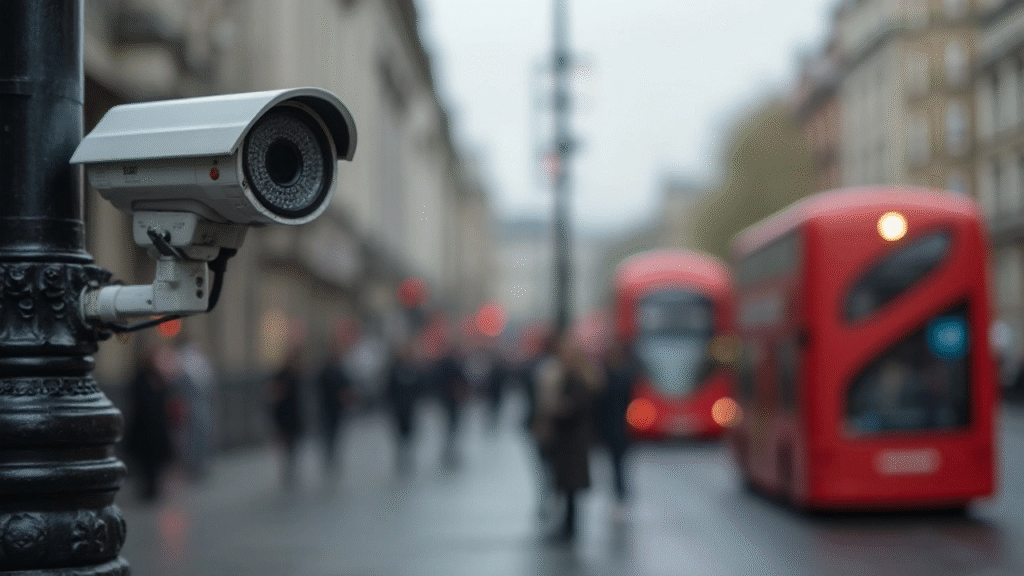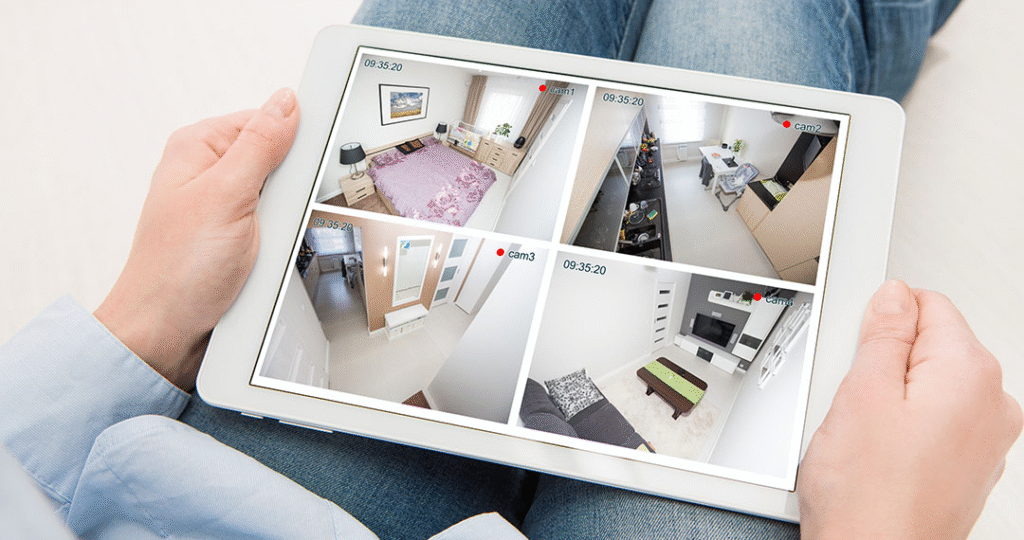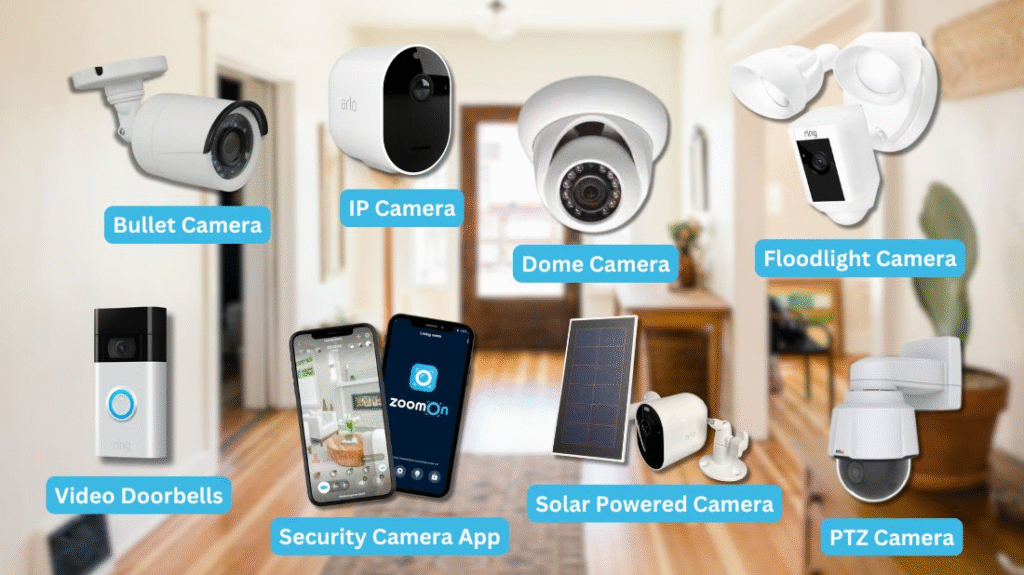In an increasingly mobile world, security solutions must evolve to match our dynamic lifestyles. Mobile security cameras represent the cutting edge of surveillance technology, offering unprecedented flexibility and protection wherever you go. No longer confined to fixed locations, these portable sentinels are transforming how individuals and businesses approach security in 2025 and beyond.
The Evolution of Surveillance Technology

Traditional security systems tethered users to specific locations, limiting protection to fixed perimeters. The modern security landscape demands more adaptable solutions. Mobile security cameras have emerged from this need, combining advanced imaging technology with wireless connectivity and portable power solutions to create versatile security tools.
The journey from bulky CCTV installations to today’s compact, feature-rich mobile security cameras spans decades of innovation. Early portable cameras suffered from poor image quality, limited battery life, and unreliable connectivity. Today’s models leverage AI-enhanced imaging, extended battery performance, and multi-network communication protocols to deliver enterprise-grade security in pocket-sized packages.
Key Features of Modern Mobile Security Cameras

Compact Yet Powerful Design
Today’s mobile security cameras pack impressive capabilities into remarkably small frames. Many flagship models weigh under 200 grams while delivering 4K video resolution, night vision capabilities, and sophisticated motion detection. This miniaturization hasn’t come at the expense of durability – premium options offer weatherproof construction, impact resistance, and operating temperature ranges from -30°C to 60°C.
Wireless Connectivity Options
Connectivity forms the backbone of mobile security camera functionality. The latest models feature multi-band connectivity, automatically switching between 5G, LTE, Wi-Fi, and even satellite connections to maintain continuous operation. Edge computing capabilities allow these devices to process critical security data locally when connections falter, syncing with cloud services once connectivity resumes.
AI-Enhanced Security Features
Artificial intelligence has revolutionized mobile security cameras, transforming them from passive recording devices to active security partners. Modern systems employ sophisticated algorithms for:
Facial recognition and person identification
Unusual behavior detection and alerts
Object recognition (weapons, vehicles, packages)
Audio analysis for threat detection (breaking glass, aggressive voices)
Predictive analytics to anticipate security breaches
These AI capabilities dramatically reduce false alarms while ensuring genuine threats receive immediate attention.
Extended Battery Life and Power Options
Battery performance remains crucial for truly mobile security solutions. The latest generation of mobile security cameras feature:
High-density lithium-polymer batteries offering 12-72 hours of continuous operation
Rapid charging capabilities (80% capacity in under 30 minutes)
Solar charging options for extended field deployment
Power management AI that optimizes performance based on security priorities
Hot-swappable battery systems for continuous operation
Applications Across Industries

Personal Security
Individuals increasingly rely on mobile security cameras for personal protection. Whether monitoring hotel rooms while traveling, securing temporary workspaces, or enhancing home security during vacations, these devices provide peace of mind through immediate alerts and real-time video access. Parents use them to monitor children at parks or public spaces, while outdoor enthusiasts deploy them to secure campsites or monitor trails.
Business Applications
The commercial applications for mobile security cameras continue to expand rapidly. Construction companies deploy them to monitor valuable equipment and materials at job sites. Retail businesses use them for pop-up locations and event security. Real estate agents secure properties during open houses, while logistics companies monitor cargo during transport. The flexibility of these systems allows businesses to extend security coverage precisely when and where needed.
Law Enforcement and Emergency Services
Police departments, emergency management agencies, and security firms increasingly incorporate mobile security cameras into their operations. These devices enable rapid deployment for special events, disaster response, evidence gathering, and temporary surveillance operations. Their small profile combined with sophisticated capabilities makes them invaluable tools for dynamic security situations.
Integration with Smart Ecosystems

Modern mobile security cameras don’t operate in isolation. They form integral components of broader security and smart device ecosystems. Advanced models feature:
Seamless integration with smart home platforms
API support for custom security applications
Automated responses through IoT device triggering
Digital assistant compatibility for voice control
End-to-end encryption and secure authentication
This integration transforms mobile security cameras from standalone devices into coordinated elements of comprehensive security solutions.
Privacy and Ethical Considerations

The power and ubiquity of mobile security cameras raise important ethical questions. Responsible use requires balancing security benefits against privacy concerns. Best practices include:
Clear notification when surveillance is active
Strict data retention and protection policies
Avoiding recording in private spaces without consent
Regular security audits and firmware updates
Transparency about AI capabilities and limitations
Manufacturers increasingly build privacy safeguards directly into their products, including physical lens covers, geofencing restrictions, and mandatory notification features.
The Future of Mobile Surveillance

The evolution of mobile security cameras continues at a remarkable pace. Emerging trends point to several exciting developments:
True autonomous operation through advanced AI
Swarm functionality allowing multiple cameras to work as coordinated units
Quantum encryption for unhackable communications
Atmospheric sensors to detect chemical, biological, or environmental threats
Augmented reality integration for enhanced situational awareness
As these technologies mature, mobile security cameras will continue transforming from passive recorders to active security partners capable of predicting and preventing threats before they materialize.
Conclusion
Mobile security cameras represent far more than simply untethered versions of traditional surveillance equipment. They embody a fundamental shift in our approach to security – from fixed, reactive systems to dynamic, intelligent protection that follows us wherever we go. As technology continues advancing, these versatile guardians will undoubtedly play an increasingly central role in personal, commercial, and public safety strategies worldwide.
(FAQs) About mobile security camera
Q1 How secure are mobile security camera connections?
Premium mobile security cameras employ multiple security layers including end-to-end encryption, secure boot processes, and multi-factor authentication. Most enterprise-grade options use AES-256 encryption and segregated network architecture to prevent unauthorized access. However, security quality varies significantly between manufacturers, making it essential to select devices from reputable companies with strong security track records.
Q2 Can mobile security cameras work without an internet connection?
Yes, many modern mobile security cameras feature edge computing capabilities that enable core functions without active internet connections. These cameras can record locally to internal storage, perform AI analysis on-device, and store alerts until connectivity returns. Some advanced models even create local mesh networks when traditional connections fail, allowing multiple cameras to share resources and maintain security coverage.
Q3 How long can mobile security cameras operate on battery power?
Battery life varies dramatically based on usage patterns, environmental conditions, and specific features activated. Entry-level mobile security cameras typically provide 8-12 hours of continuous recording, while premium models can extend to 72+ hours through sophisticated power management. Many systems offer “adaptive recording” that activates only when motion or anomalies are detected, potentially extending battery life to weeks between charges.
Q4 Are mobile security cameras legal to use anywhere?
Legal restrictions on mobile security cameras vary significantly by jurisdiction. Most locations permit recording in public spaces or on private property you own or have permission to monitor. However, many regions prohibit recording in areas with expectations of privacy (bathrooms, changing rooms, etc.) or using these devices for harassment or stalking. Some countries require visible notification that recording is taking place. Always research local regulations before deploying mobile surveillance.
Q5 How do weather conditions affect mobile security camera performance?
Weather resilience varies between models, but professional-grade mobile security cameras typically offer comprehensive environmental protection. Quality devices operate effectively in temperatures from -30°C to 60°C, resist water intrusion to IP67 standards or better, and withstand dust, snow, and moderate impact. Higher-end models feature automatic lens clearing, internal climate control, and adaptive imaging systems that adjust to challenging weather conditions including fog, heavy rain, and direct sunlight.
For More Information Visit Bratish Magazine

















































































